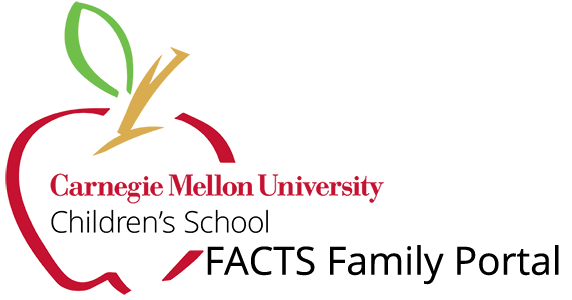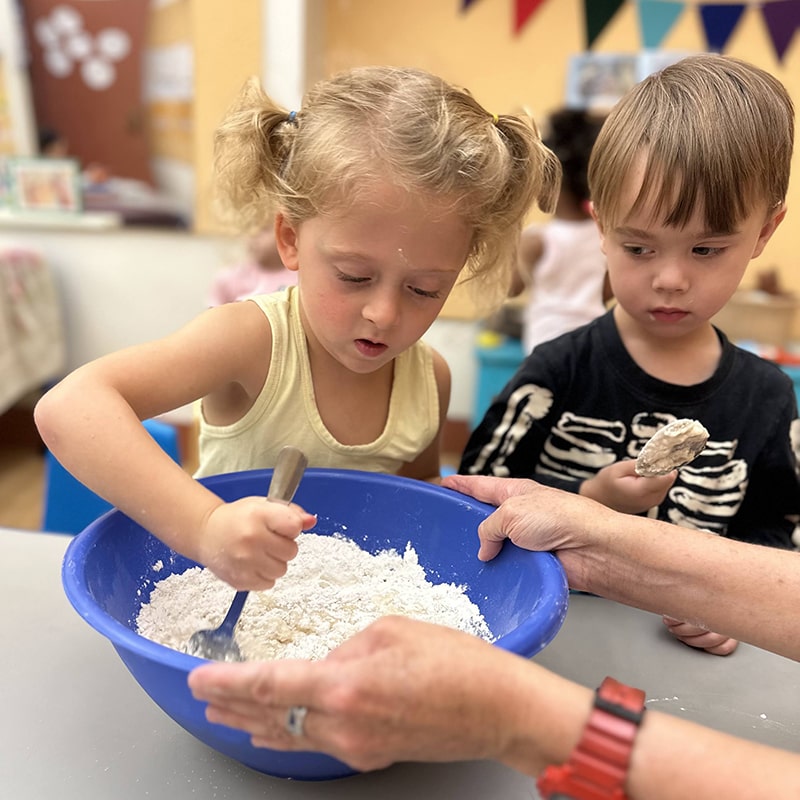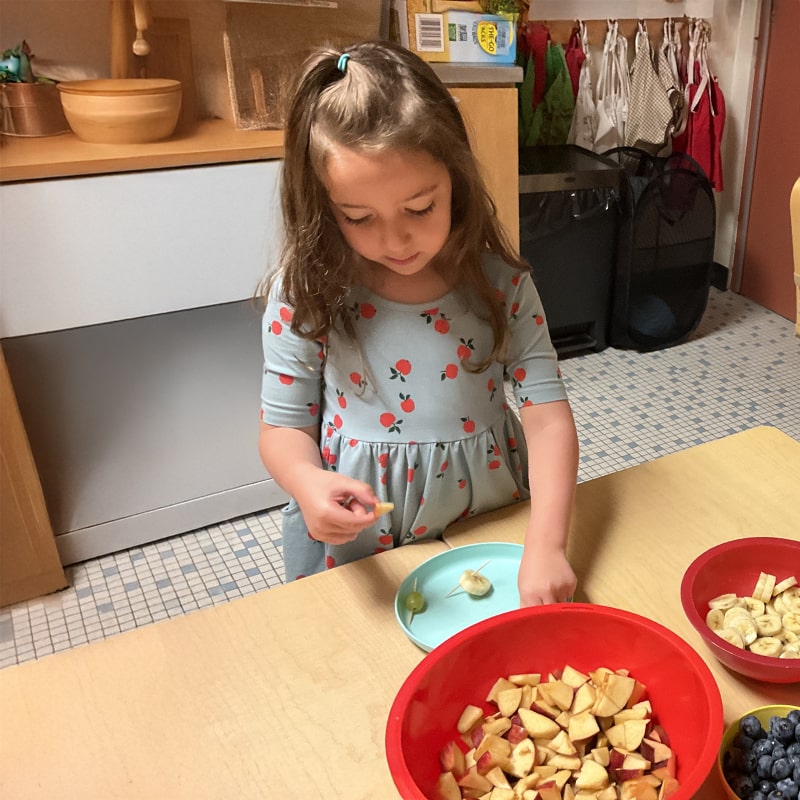Cooking as a Tool for Stimulating Development in Early Childhood Education
Integrating Food, Nutrition, and Cooking into the Early Childhood Curriculum can be done in accordance with all of the standards for developmentally appropriate curriculum!
Developmentally appropriate curriculum - is relevant, engaging, and meaningful to children, respects individual, cultural, and linguistic diversity, builds on what the children already know and are able to do, provides opportunities for rich conceptual development, engages children actively in the learning process, encourages exploration as well as learning established procedures, has intellectual integrity re: the relevant standards of the disciplines, addresses the development of knowledge, skills, and attitudes, meets age-appropriate goals in all domains of development, and is flexible so that it can be adapted to the individual needs of the child.
*See Bredekamp and Rosegrant (1995). Reaching Potentials:Transforming Early Childhood Curriculum and Assessment. NAEYC
Cooking at the Children's School
- Children ages 3-6 years
- Small Kitchen with a low table for 6-8 children
- Refrigerator, Freezer, Stove, Microwave, Sink & Cupboards
- Occasional projects during Activity Time of Preschool
- Weekly projects in the Kindergarten program, sometimes more
Use of Cooking to Facilitate Developmental Goals
Self-Esteem & Independence
Encouraging each child 's pride in individual characteristics, families, experiences, and accomplishments and each child's responsibility for personal care, actions, and words. List healthy foods in each of the food groups. Describe the foods that are commonly eaten at home. Identify foods that are chosen because of the child's culture and/or religious beliefs. Discuss family roles re: cooking, cleanup, etc. State basic safety rules for cooking and eating, and cleanup. Identify important steps for sanitary cooking, eating, and cleanup. Make healthy choices for safety, sanitation, and eating. Follow basic kitchen safety procedures. Eat independently using appropriate utensils. Develop basic skills for washing dishes, disposing wastes, storing food. Feel a sense of accomplishment/pride re: eating and cooking. Appreciate that part of taking care of our bodies is to make safe, clean and healthy choices.
Interaction & Cooperation
Promoting children's social skills for diverse adult and peer relations, including listening, turn-taking, following directions, rules and routines, group participation, care for shared materials, and conflict resolution. Describe cooking and eating procedures. Discuss table manners and appropriate conversation. Follow kitchen routines for setup, cooking, cleanup, etc. Follow directions re: cooking procedures. Respond to correction respectfully. Share and take turns when working with peers. Help peers when the need arises. Use table manners and polite table talk. Use words to resolve conflicts. Willingly persist during an extended project from start to a delicious result. Appreciate the work that food production and cooking involves. Respect differences in cooking and eating practices.
Communication
Facilitating comprehension and expression skills beginning with oral and progressing to written language. Learn vocabulary for foods, utensils, cooking, cleaning, etc. Identify the category labels for the food groups. Recognize containers associated with particular foods. Associate symbols on a recipe with ingredients and utensils. Identify letters and numbers used in recipes, food ads, etc. Recognize the basic recipe and menu format. Orally express experiences and ideas related to food, nutrition, and cooking. Ask questions. Answer questions. Participate in conversation during cooking activities. Enjoy books and stories about food, nutrition, and cooking. "Read" recipes by using pictures and words. Retell the steps in a cooking procedure in sequence. Dictate stories re: cooking experiences. Create a Foods Book to record tasting experiences. Write pretend recipes, menus, etc. during dramatic play. Feel confident in communicating food preferences, questions, etc. Appreciate the value of print for communicating cooking directions.
Discovery & Exploration
Fostering a positive attitude toward learning through questioning, observing, and experimenting with varied materials related to diverse themes. Identify sources of favorite foods (e.g., French fries come from potatoes). Discuss the way that food provides energy and nutrients for the body to grow and stay healthy. Learn about vitamins, digestion, health, recycling, etc. State different jobs associated with food (chef or cook, baker, preparer, dishwasher, waiter/waitress, host/hostess, sanitation engineer, maintenance engineer, gardener, farmer). Explore foods with all of the senses. Sort foods by color, shape, texture, food group, etc. Order foods by weight, size, etc. Plant and grow food. Observe the physical changes that ingredients undergo during food preparation. Practice counting, measuring, timing, etc. Explain why each step in the cooking procedure needs to be taken. Review and record the steps in a growing, cooking, or cleaning procedure. Take a positive approach to new situations. Initiate varied methods, ideas, etc. View mistakes as a part of learning.
Physical Capabilities
Giving children opportunities to use their growing bodies to develop small and large motor skills and coordination. Identify cooking utensils and their functions. Recognize the appropriate way to hold utensils. State the directions for using utensils. Small Motor (slicing, scraping , cutting, chopping, grinding, grating, rolling, kneading, pouring, stirring, spreading, squeezing, molding, peeling, cracking, peeling, beating, coring, shaking, etc.). Large Motor (washing, wiping, planting, digging, pulling weeds, harvesting, watering, etc.). Feel confident in use of utensils for cooking, eating, cleaning, etc. Appreciate that practice will help improve skills.
Artistic Expression & Appreciation
Cultivating each child's ability to express ideas and emotions through art, music, movement, and drama. Learn songs to help remember facts. Associate colors, shapes, etc. with particular foods. Associate movements and rhythms with particular cooking procedures. Use foods and cooking utensils for artistic expressions (e.g., vegetable prints, macaroni collages, pudding painting). Decorate food in varied ways (e.g., cookie decorating, food arrangement on platters, etc.). Use drawing to represent foods, record cooking procedures, etc. Participate in songs and fingerplays re: food, cooking, nutrition, etc. Role Play food-related occupations (chef or cook, baker, preparer, dishwasher, waiter/waitress, host/hostess, sanitation engineer, maintenance engineer, gardener, farmer). Value diverse ways of expressing ourselves through art, music, drama, and creative movement. Appreciate the creative efforts of others.
Keys for Classroom Management of Cooking
Safety First!
- Safe cooking environment (seated around a large table, away from stove, dangerous utensils out of reach, keep cords away)
- Before handling food, wash hands in warm, soapy water, then rinse and dry thoroughly.
- Make sure children are elevated to a comfortable counter height with a stable stool or chair.
- Always wipe up floor spills right away to prevent slipping.
- Wear child-sized aprons when cooking.
- Tie long hair back.
- Avoid long sleeves.
- Keep children away from stove.
- Keep all pot handles pointing away from children.
- Keep pot holders, trivets, and cooling racks handy.
- Pull out the oven rack part way before removing pans.
- Substitute a clean pair of scissors or egg slicer for a knife.
- Use serrated knives rather than dull or slicing knives.
- Use plastic knives for cutting soft ingredients.
- Hold only the knife handle, never the blade.
- Keep sharp part of the knife pointed away when cutting.
- Pre-cut ingredients if they're too hard for children to cut.
- Be careful with eggs! (don't use cracked eggs or eat anything with raw eggs)
- Check expiration dates on ingredients.
For Smooth Projects
- Check every child's records for ALLERGIES before selecting recipes.
- Always try/test the recipes beforehand!
- Any preparation that adult must do should be done ahead of time.
- Make sure you have sufficient quantities of all ingredients before beginning.
- Pre-measure any ingredients that are too difficult for children to measure.
- Have stages of a project finished ahead of time to save time.
- Use an ice chest if you don't have a refrigerator near your classroom.
- Toaster ovens and microwaves work well for many recipes if a conventional oven isn't available.
- Discuss rules of safety/sanitation before you begin (see above) and follow the rules consistently.
- Keep cooking groups small.
- Determine appropriate # of children to do activity beforehand.
- Transfer the recipe to a large chart or overhead transparency.
- Divide the jobs among class members or have them take turns being chefs and tasters.
- Have the children do both the cooking and cleanup.
- Put bowls and cutting boards on top of damp paper towels to prevent slipping.
- To crush ingredients, put in plastic freezer bag first.
- Have enough ingredients for children to taste and manipulate as project is done.
- Try to have extra ingredients on hand in case of mishaps.
- A handy substitution chart is helpful to have!
- Research shows that children need to be offered a new food at least 8-10 times before most will try it.
- A taste can be as small as one half a teaspoon.
- Let the children determine how little they want to taste.
- Color, texture, and flavor all make a difference.
- Never force a child to eat a particular food.
- Offer it, encourage and compliment the child for trying, then offer it again another time.
- Point out children who are trying new foods (peer pressure can function as a catalyst for trying new foods).
- Be a role model! You taste it too!!
- Keep a camera or tape recorder in the kitchen for documentation. (It helps to have an assistant to do the photography)
Appropriate Cooking Projects for Preschool & Kindergarten
There are multiple effective approaches to Planning Curriculum such that it meets the full spectrum of developmental objectives by including an emphasis on food, nutrition, and cooking.
Food Frames
One way to integrate food, nutrition, and cooking into the curriculum is to develop units with food as the central frame. The unit could be organized alphabetically (Foods from A-Z, Cooking from A-Z, etc.), by food groups, by meals (breakfast, lunch, dinner, snack), by origins (foods from plants vs. animals), or by the children's food interests (a whole unit on bread, apples, carrots, etc.).
Literature
Another way to integrate food, nutrition, and cooking into the curriculum is to use cooking activities as one extension of a story-based unit.
Theme Threads
Yet another way to integrate food, nutrition, and cooking into the curriculum is to use cooking activities to extend and reinforce the concepts in a thematic unit. For example, here are some cooking ideas that could be used in the following thematic units:
- FALL/FARM - toasted pumpkin seeds, baked caramel apples, mighty milk, beehive cupcakes
- CELEBRATIONS - friendship fruit salad, birthday cones, grandma's potato latkes
- WINTER - hot cocoa mix, snow ice cream
- ANIMALS - rabbit food salad, mouse cookies, dog bones,
- HERITAGE - (Mexico) - traditional foods from Mexico
- DINOSAURS - bread dinosaurs, chocolate chip cookie excavation
- NURSERY RHYMES & FAIRY TALES - gingerbread people, candy houses
- SPRING - butterfly bites, marshmallow spiders, Ugh! Worms in Mud
- Related Field Experiences and/or Dramatic Play Centers: Garden, Farm, Grocery Store, Bakery, Cafeteria






